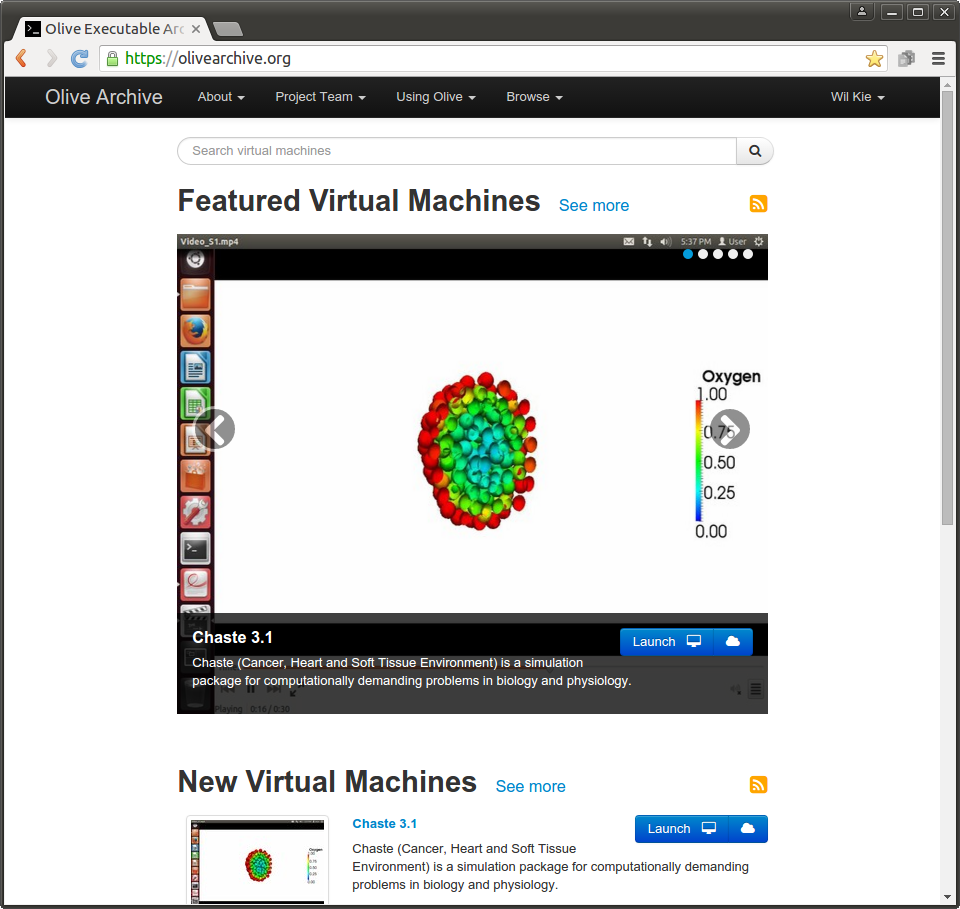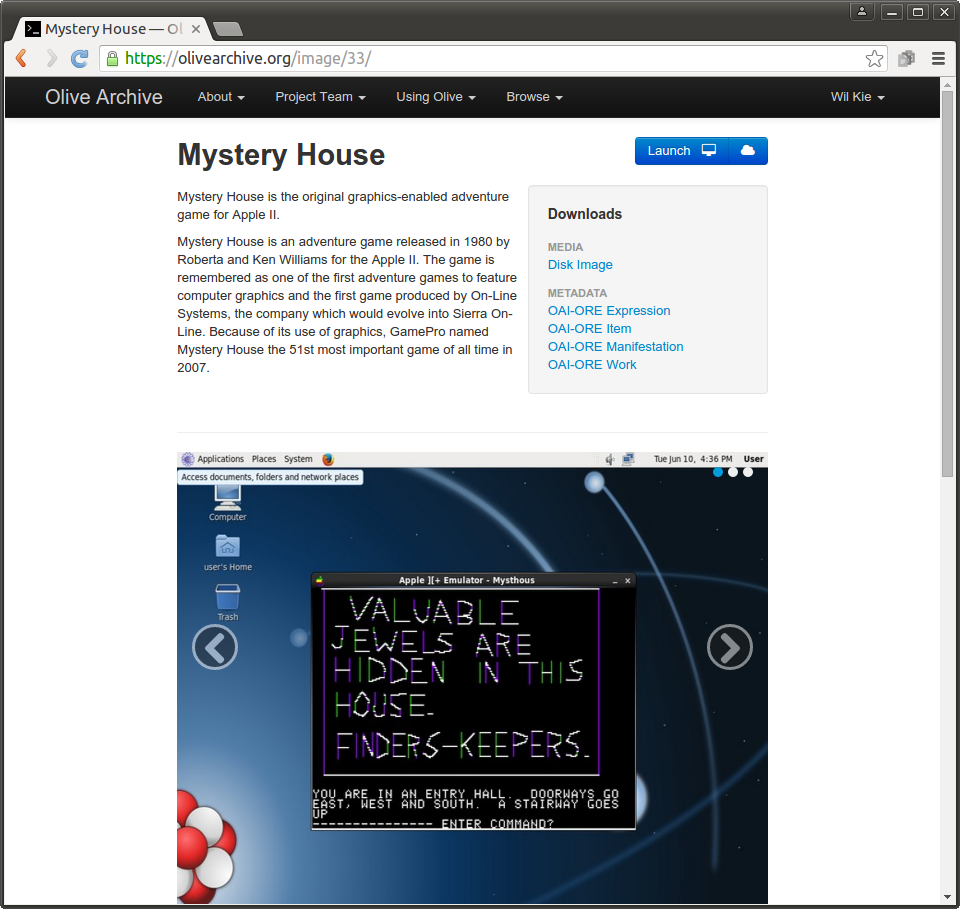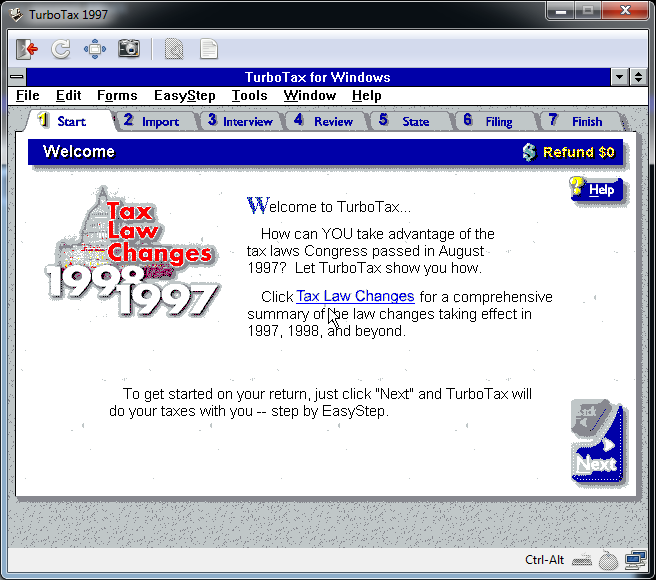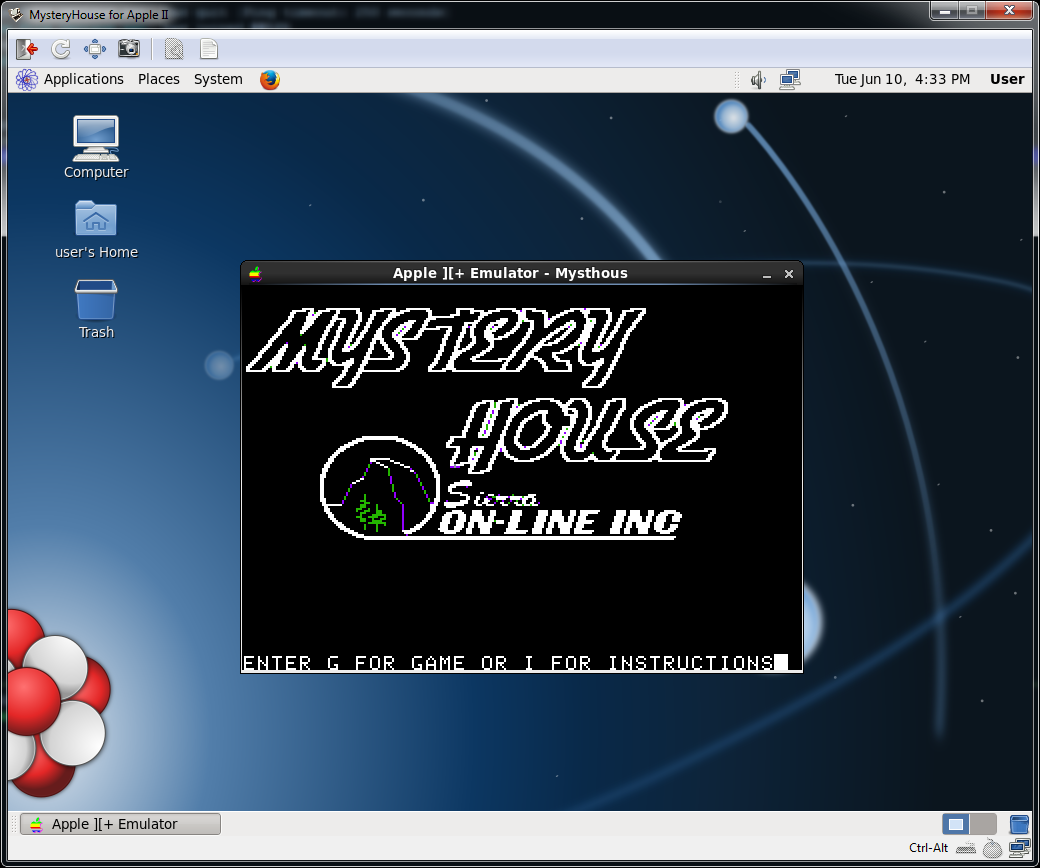About
Authors
Yoshihisa Abe - Graduate Student, Carnegie Mellon University
Jan Harkes - Principal Project Scientist, Carnegie Mellon University
Erika Linke - Associate Dean of University Libraries - Carnegie Mellon University
Jerome McDonough - Associate Professor, University of Illinois at Urbana-Champaign
Gloriana St. Clair - Dean Emerita of University Libraries, Carnegie Mellon University
Mahadev Satyanarayanan - Carnegie Group Professor, Carnegie Mellon University
Keith Webster - Dean of University Libraries, Carnegie Mellon University
Information
Type: VM Archive, Digital Library, Virtual Machine Streamer
License: Mixed: Client: GPLv2, Server: Closed (with intention to open-source)
Timeline: 2014-
Institution: Carnegie Mellon University
Motivation
From their about page:
Today, an increasing fraction of the world's intellectual output is in the form of executable content. These include simulation models, tutoring systems, expert systems, data visualization tools, and so on. Even content that could be static (such as a company's product information Web page) is often dynamically generated through execution of code that customizes the content and appearance at runtime... [Olive seeks] to freeze and precisely reproduce the execution state that produced this dynamic content.
M. Satyanarayanan
Also included there:
Goals
- Enable libraries to achieve their mission of preserving the scholarly record
- Provide a platform for preserving, searching, extending, and distributing executable content
- Establish a workflow for this preservation
- Determine the obstacles to preservation and distribution
- Retain executable content in its original state such that end users may interact with it freely
Rubric
✔ - Yes
✗ - No
○ - Yes, but with concession
· - Inapplicable
? - Unknown
| Infrastructure | ||
| Self-Hosting | ✗ | Currently the server code is closed-source and unavailable to host yourself. |
| Provides Metadata | ✔ | Various library standards are supported: RDF formats including OAI-ORE Expression, Item, Manifestation, and Work. |
| Provides Hardware Diversity | · | |
| Dispatches Work to Cloud Machines | ✔ | You can run virtual machines on manually maintained servers on cloud infrastructure. |
| Provides a Web Portal | ✔ | The archive exists as a simple webserver. Buttons on the webportal automatically open the client software. |
| Provides Performance Monitoring | ✗ |
| Capabilities | ||
| Runs Code | ✔ | Runs natively on x86 machines running KVM, streams from a cloud server otherwise. |
| File Storage | ✔ | Their server stack stores VM images. But it is entirely manually maintained. |
| Collaboration Controls | ✗ | |
| Provides Citations | ✗ | |
| Interactive Graphing | ✗ | |
| Can Combine Objects Interactively | ✗ | |
| Can Archive/Run GUI Tools | ✔ | This is entirely the focus of Olive. |
| Can Hook to External Services | ✗ |
| Access | ||
| Public view of object | ✗ | This is specifically evaluating their current server, which is private and completely moderated for access. |
| Access Permissions for Editing | ✗ | Objects can only be edited by an administrator. Technically, an admin can edit them, but this access is not moderated by any object owner. |
| Access Permissions for Reading | ✗ | |
| Access Permissions for Anon Review | ✗ | |
| Embeddable Access | ✗ |
| Provenance | ||
| Search | ✔ | |
| Globally Unique Identifiers for Projects | ✗ | |
| Provides URL to Project / Data | ✔ | Although, an account must be given to you and authenticated to access the metadata. |
| Governance | ||
| Open Source | ✚ | The client (vmnetx) is GPLv2, the server is closed with the intention of open-sourcing later. |
| Allows Modification / Redistribution | ✚ | See above. The license of the client does allow for modification, reuse, and redistribution. |
| Has a Free-to-Use Package | ✔ | |
| Has a Student Package | · | |
| Has a Paid Package | · |
Walkthrough
Olive is a tool that can capture virtual machine images and run them. Typically, the drawback for using virtual machine images is their size. You can either run them on a server somewhere and stream the video or copy the output, or you can download the VM image. Both have drawbacks. Video streams aren't necessarily responsive and server computation is more expensive than a simple file download. Yet, a file download means large bandwidth requirements and a longer wait time while that image downloads. Olive, instead, picks a compromise and beyond letting you stream the video stream also has built itself on technology called Internet Suspend/Resume that will stream QEMU+KVM virtual machines as data is needed resembling a type of demand paging.
When you have an account on their server software, you will see a list of available artifacts. The artifacts Olive currently hosts are using a variety of operating systems and environments. DOS, Apple II, older Macintosh and Windows 3.1 are all represented. They support only an x86 KVM backend, so they are able to run these older applications on 68000 and PowerPC architectures through emulators running on Linux. DOS and Windows run natively using KVM to boot a guest machine in x86 real mode. Olive has permission from Microsoft to redistribute Windows 3.1 for non-commercial use, something you must also agree and acknowledge before gaining access to the archive.
Navigating to an individual artifact's page will give you a description of that artifact and why it is significant. Also, you can download the disk image used to prepare the virtual machine. Various forms of metadata are listed and use standard metadata specifications that build off of RDF.
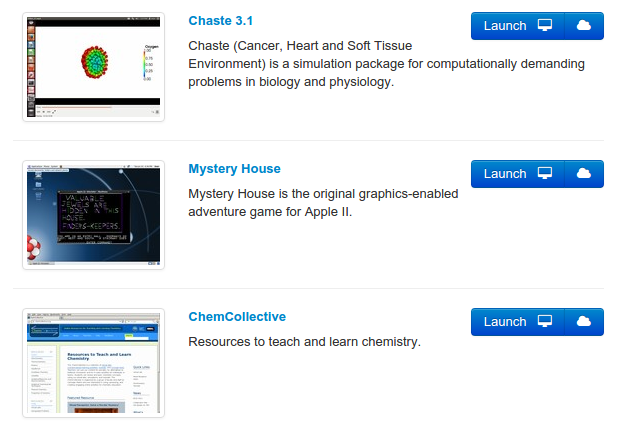
The Launch button will be available only on Linux machines when the client software is installed. The Cloud button is reserved for other platforms where it will stream the video instead of doing native execution.
On the archive page or artifact page, two buttons are presented. When possible, the first button marked "Launch" will start the client software in a native mode. Here, the virtual machine will be streamed over and executed on the native machine on demand. When this isn't possible (because you are using a platform or device that does not support the QEMU+KVM environment) that button will be grayed out.
The second button is always available. This button, marked with a cloud, will start the client and execution will occur on one of their servers (you can select by holding down on the cloud button) and the audio, video, and interactions will be streamed using a remote desktop technology (SPICE).
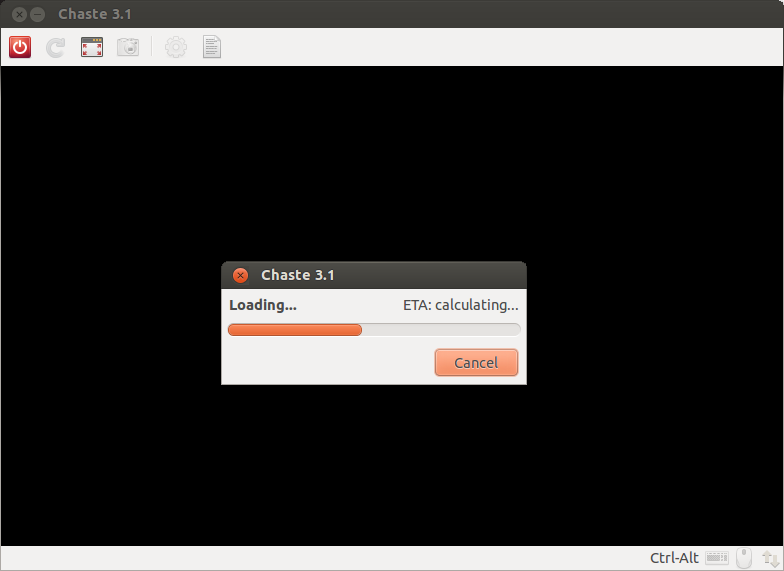
Here, we are streaming the content using SPICE, a remote desktop protocol. The execution is done on the server and not our own machine. We only have to wait a short while for the content to boot.
Content is lost when the client is closed. No state is persisted. The artifacts in the archive and therefore about exploration and preservation. Any longterm changes or modifications would be done by downloading the virtual machine disk image and running it on your own.
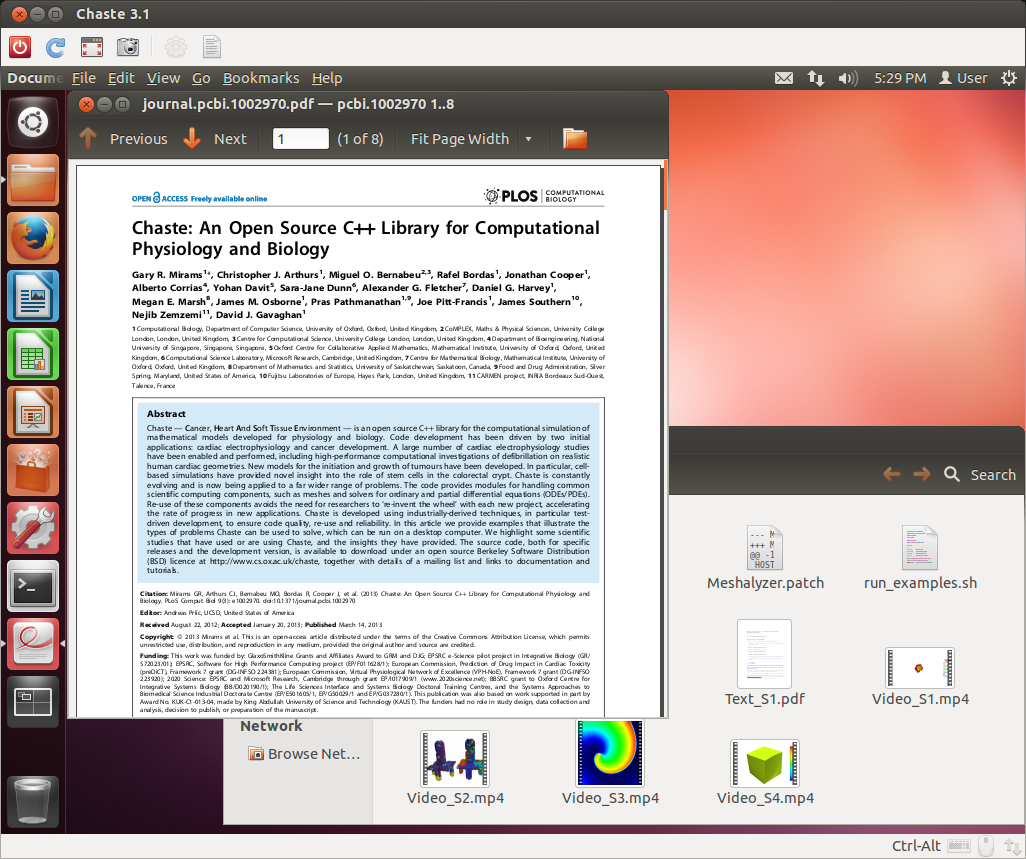
Artifacts that represent scientific work are preserved within a virtual machine image that can be executed and explored in detail. The source code exists on the machine and can be compiled and scripts exist to run the simulation and recreate results.
Infrastructure
The Olive client runs on Mac, Windows, and Linux machines. However, only in particular circumstances can the client execute the virtual machine directly. On Mac and Windows, the client merely streams the content over using SPICE, a remote desktop protocol.
)](/reproducibility-site/images/projects/olive/diagram.jpg)
This diagram showcases an example of how content is added and manipulated within the Olive ecosystem. Alterations can be saved and removed without any modifications to the archived version. (Source)
The Olive server therefore needs to be a Linux-based machine capable of running KVM. The stack is QEMU+KVM with some extensions to support on-demand request of virtual machine data. Those extensions are completely encapsulated in their VMNetX client software.
They provide their own curated space for artifacts and display them on with a simple django-based CMS. The virtual machine images are requested using basic HTTP range requests. The file server technology isn't sophisticated and can be replicated with various common open-source components.
Capabilities
The following images illustrate the capabilities of Olive. Olive runs virtual machine images on top of QEMU+KVM using a technology to stream the virtual machines from a server to a QEMU+KVM client machine (that the archive user would use, such as a laptop) and execute them natively. This means Olive can only currently run x86 images natively and uses Linux emulators of other architectures where necessary.
This means Olive inherits the flexibility of virtual machines running under a hypervisor. Yet, it also inherits some of the drawbacks. The Internet Suspend/Resume technology mitigates the largest drawback of a virtual machine archive: the need to transfer an entire image in order to run the virtual machine. With that mitigated, images are very quick to start, thus artifacts are very quickly explored. This encourages play.
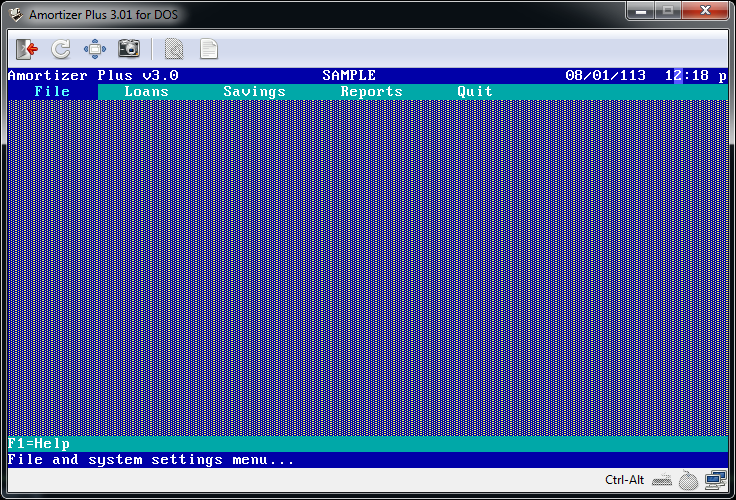
Amortizer is a DOS program running natively using QEMU+KVM either on the client machine or on a cloud server.
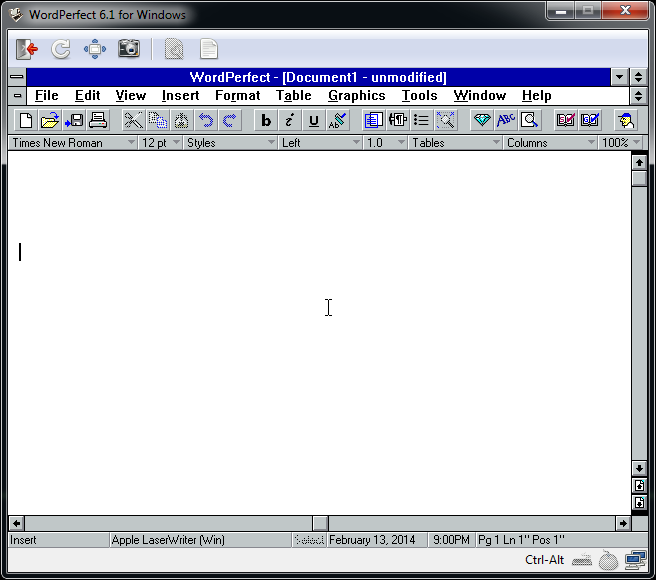
Using OLIVE, old programs can still run and be used to open older file formats, such as WordPerfect 6.1 here.
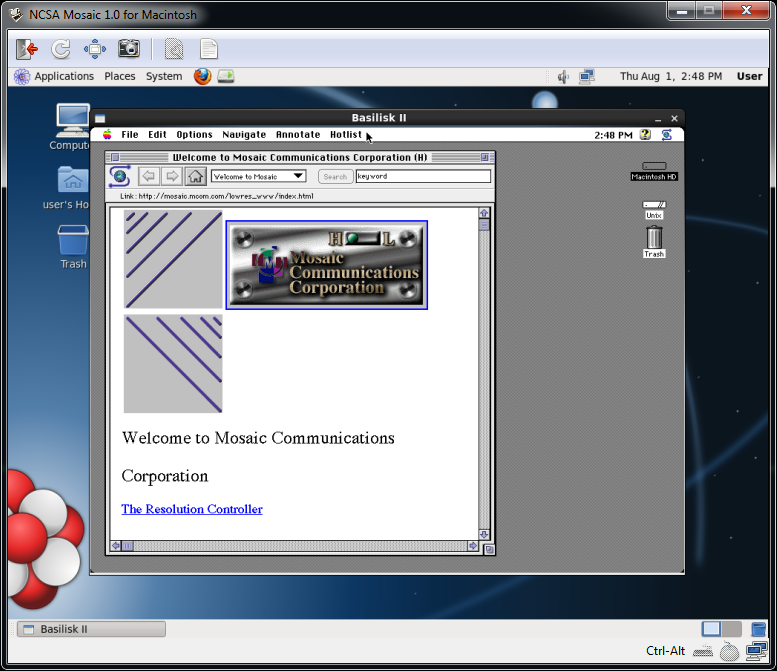
Older programs of historical significance are easily executed within emulators that run on the native QEMU+KVM infrastructure.
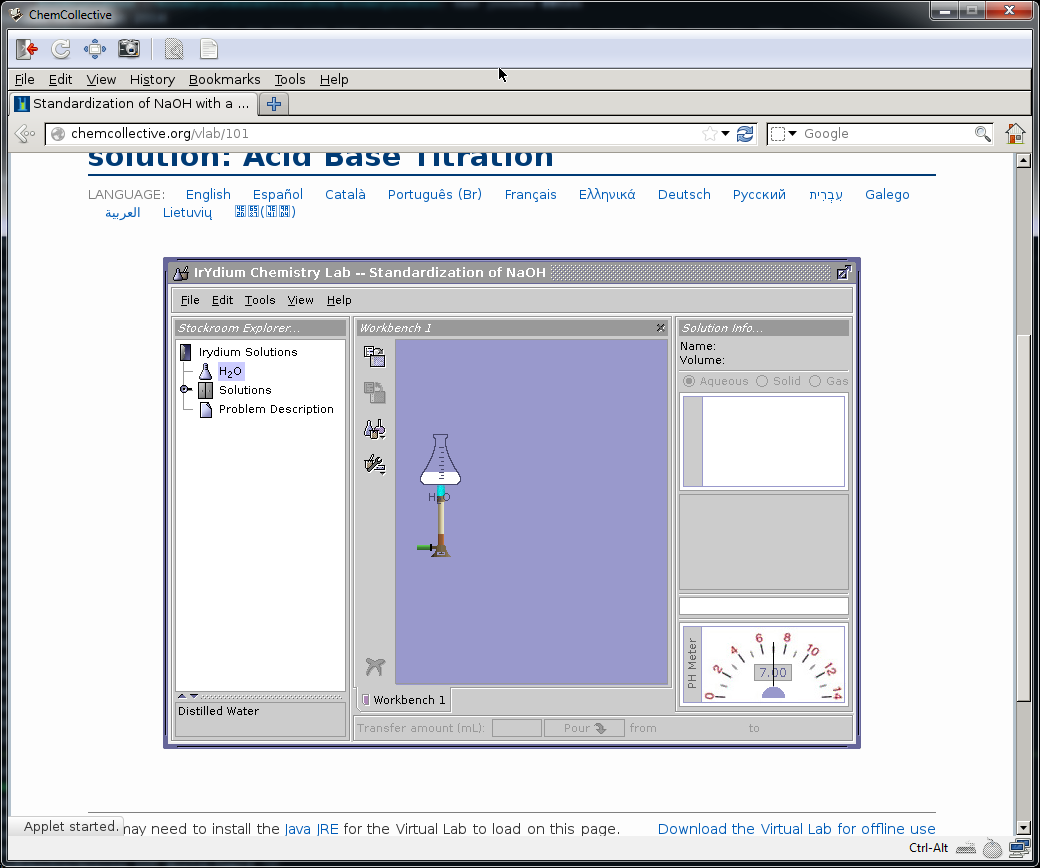
Entire websites, with some manual archival effort, can be collected and browsed using a generic VM with a browser and a running webserver.
Access
Their server can authenticate accounts. Only those accounts can access images from their collection.
Provenance
It should be noted that Olive is a technology and not a digital library.
Optional related data and metadata is stored and linked on their server side. Although the server side is not open-source, it shows what is expected to be linked with Olive archive content.
Some examples are the DOOM installer is included with DOOM, which shows the provenance of that object. You could download that and run it in an emulator of your own to see how that process would have worked and looked like.
Another example includes OAI-ORE metadata, which is an open standard for metadata for open archives. It is RDF-based, which is a typical markup format for metadata and relational/linked data.
Most artifacts also include the disk image that is used to load the virtual machine. Therefore, you can replicate a copy of that disk image and use it on, for instance, a different hypervisor.
Governance
Olive is an open source project. The client technology is the sophisticated piece of its infrastructure. All components are open source under the GPLv2 license. The server components, however, are not released, but they are simply a file server. The server serves up the VM images on demand using traditional HTTP range requests. Therefore, one could set up a server in a similar way using open source components. Since, however, their authentication server and metadata library code is not open source yet evaluated here, they get a partial "yes" for being open source.
This speaks to longevity. Their client code being open source means others can build upon it and maintain it if it should go unmaintained by its original authors.
Strengths
To be discussed.
Breakdown
Weaknesses
To be discussed.
Breakdown
Unique Features
Internet Suspend/Resume support allows for the content of virtual machines to be executed natively on a machine with KVM available without the entire VM image to be resident on the machine. Instead, the VM contents are streamed on demand.
Best-Practice Influences
To be discussed.
Digital Library Incorporation Issues
To be discussed.
Applied Use-cases
To be discussed.

